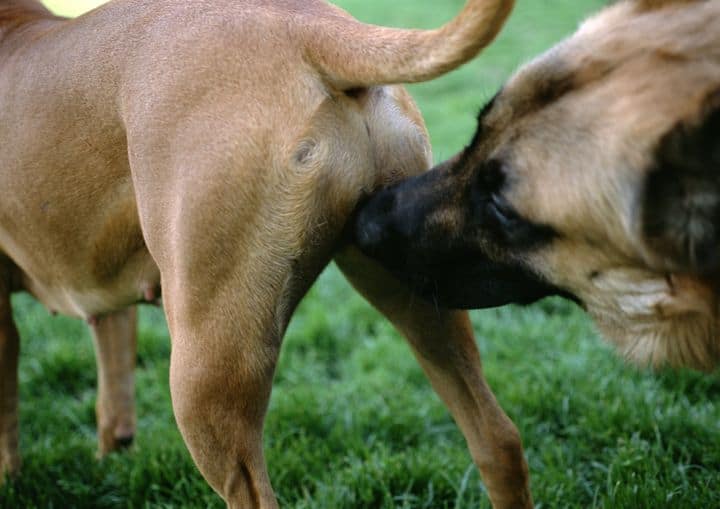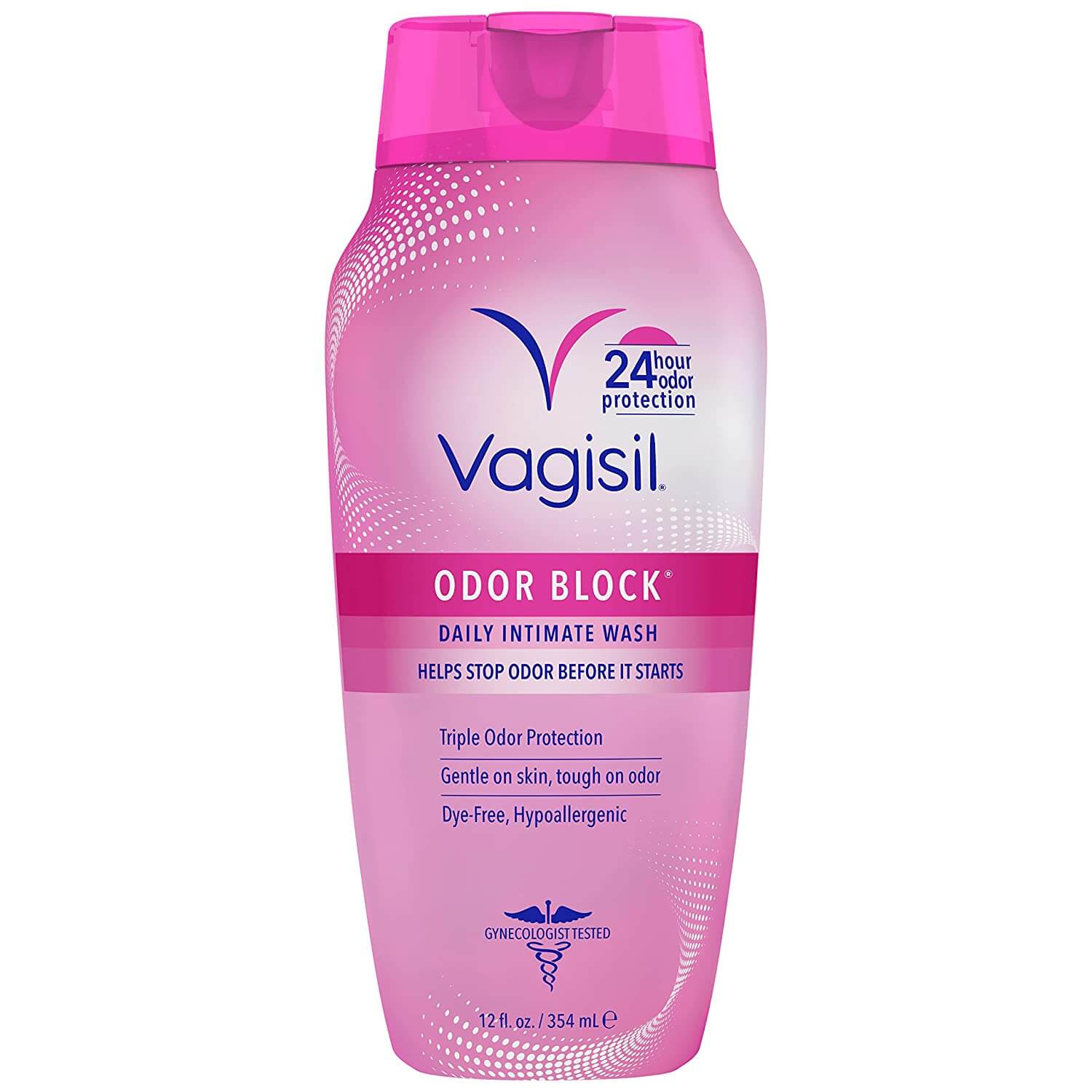A vaginal yeast infection or candidiasis, is a common fungal infection in both humans and dogs.
It is caused by the overgrowth of a type of yeast called Candida albicans.
This can happen when the natural pH balance in the vagina is disturbed, which may be due to sexual intercourse, pregnancy, diabetes, or the use of antibiotics.
One of the common remedies used to deal with yeast infection is vagisil.
Vagisil is a brand of feminine hygiene products, specifically designed to relieve itching and discomfort in the vaginal area.
The active ingredient, lignocaine, acts as a topical numbing agent while other ingredients work to soothe irritation and balance pH levels.
Vagisil can be used for everyday hygiene purposes or to address specific issues such as yeast infections or irritation from shaving or sexual activity.
It is available in creams, wipes, and washes.
Because of its effectiveness in releasing irritation, one may wonder if it can be equally as effective for dogs.
Can I Use Vagisil on My Dog?

While it is true that vagisil is very good at dealing with yeast infections in humans, it doesn’t necessarily mean that it will be effective in doing the same for dogs.
For starters, vagisil has not been formulated to deal with yeast infections in dogs and the best that can happen is a temporary relief of the pain.
When dealing with any kind of ailment, it is advisable to treat the root cause as opposed to only dealing with the symptoms.
Additionally, experts advise strongly against using any human medication on your dogs or other pets for that matter.
According to PetMD, the only exception to this rule is if a qualified vet has prescribed it.
Otherwise, any human medicine should be considered unsafe for your dog.
Dogs have a different pH balance than humans, so using human medications on them can cause adverse reactions.
Additionally, Vagisil has some ingredients that might be harmful to your dog if ingested.
For instance, vagisil contained lidocaine which is typically safe but can also cause problems is consumed.
If a dog licks lidocaine, the chemical will react with the dog’s saliva to form a film on the surface of the tongue.
This film will then act as a barrier, preventing the lidocaine from being absorbed into the bloodstream.
In most cases, this is not a cause for concern, as the amount of lidocaine that is absorbed through the mucous membranes is typically very low.
However, if a large amount of lidocaine is ingested, it may lead to vomiting, diarrhea, and tremors.
In rare cases, seizure and death may also occur.
Furthermore, yeast infections in dogs are, for the most part, treated by oral medication.
Oral drugs can get to the bloodstream faster and deal with the infection more effectively.
This is not to say that topical medications are not effective—in fact, the vet might even recommend a cream.
The most important thing is to only use medication that has been prescribed by the vet.
This will be after the vet examines your furry baby to determine any underlying cause for the discomfort.
How to Treat Yeast Infections in Dogs
A vaginal yeast infection can cause itching and burning in the vagina, as well as a thick, white discharge.
Treatment for a vaginal yeast infection typically involves antifungal medications.
For mild infections, these can be taken orally, while more severe cases may require intravenous therapy.
In some cases, your veterinarian may also recommend medicated baths or wipes to help relieve your dog’s symptoms.
Vaginal yeast infections are not contagious and can be successfully treated with medication.
However, if left untreated, they can lead to more serious health problems.
It is also a bad idea to try to treat your dog without consulting a vet first, as the wrong medication can worsen the infection or have adverse effects on your dog’s health.
How Do I Get Rid Of Yeast Smell On My Dog?

When dealing with yeast infections, several steps can be taken to manage the smell and discomfort.
First and foremost, it is important to follow any instructions given by a vet for treating the infection itself.
This may involve oral medication or prescription creams.
Additionally, keeping your dog clean and dry can help with managing the smell and discomfort.
Regular baths using a medicated or anti-fungal shampoo can help to keep the infection from spreading and alleviate some of the smell.
When bathing your dog, be sure to thoroughly dry them afterward as moisture can worsen the infection.
It is also important to address any underlying issues that may be causing or worsening the yeast infection.
This may involve dietary changes, managing allergies, or addressing any chronic health conditions.
It’s best to consult with your vet to determine the root cause and create a plan for managing it.
You may also want to check: Why Does My Dog’s Vag Smell Like Metal?
How to Prevent Yeast Infection
Vaginal yeast infections may not be as common in dogs as in humans but it still can be such a pain—literally.
The good news is that there are several things you can do to prevent your dog from getting a yeast infection and as they say, prevention is better than cure.
First, keep your dog clean and dry. Be sure to wipe her down after she goes to the bathroom, and if she gets wet, make sure she dries off completely. This is important because yeast thrives in moist environments.
Secondly, maintaining a balanced and healthy diet can go a long way in preventing infections.
For starters, avoid giving your dog sweets or other processed foods. These can cause a spike in blood sugar levels, which can lead to yeast overgrowth.
Giving your dog probiotics may also help. Probiotics help to keep the natural balance of bacteria in the gut, which can help to prevent vaginal yeast infections.
You may also want to consult with your vet about your dog’s diet and if necessary, make adjustments to keep their immune system strong.
You should also avoid using scented soaps or perfumes around your dog’s vagina.
That’s because scented soaps and perfumes can disrupt the natural pH balance and lead to an infection.
Finally, managing any allergies or chronic health conditions can also help to prevent yeast infections.
If your dog is prone to allergies and other health conditions, be sure to talk to the vet about it to know the best ways to manage these issues and keep them under control.
Conclusion
If your dog gets yeast infection, the last thing you want to do is apply your vagisil on them.
The drug is not formulated for dogs and it may result in other complications due to the different pH levels in dogs and humans.
If your dog has an infection, be sure to take her to the vet right away for diagnosis and treatment. This will ensure the issue is taken care of professionally to prevent recurrence or exacerbation.
As a rule of thumb, take some precautionary steps to help your dog to avoid getting the infection in the future.
For instance, keep them clean and dry, maintain a healthy diet, avoid using scented products near the vaginal area, and manage any underlying health issues.
Remember, prevention is always better than cure.
As an Amazon Associate, we may receive a small commission from qualifying purchases but at no extra cost to you. Learn more. Amazon and the Amazon logo are trademarks of Amazon.com, Inc, or its affiliates.

